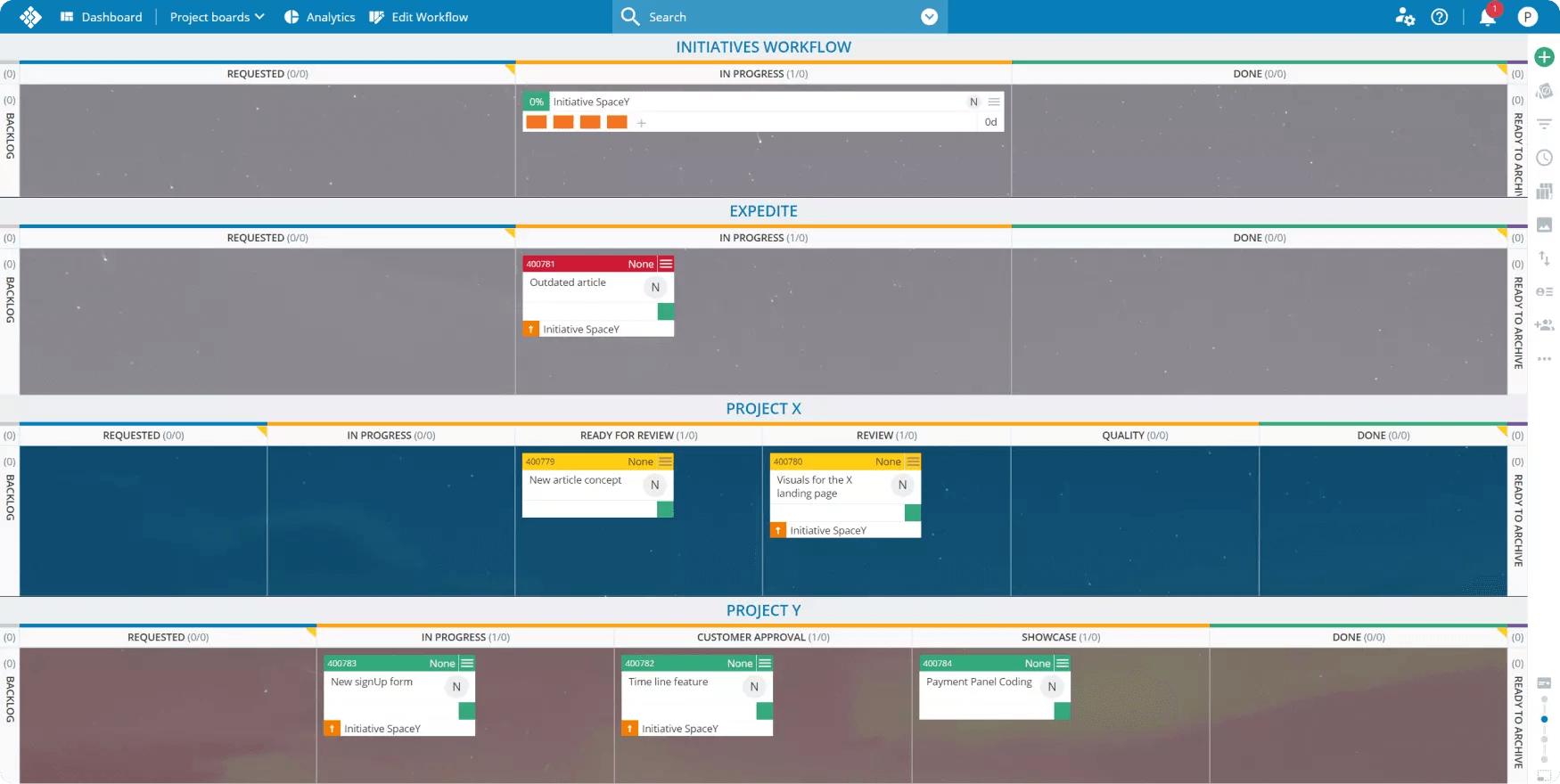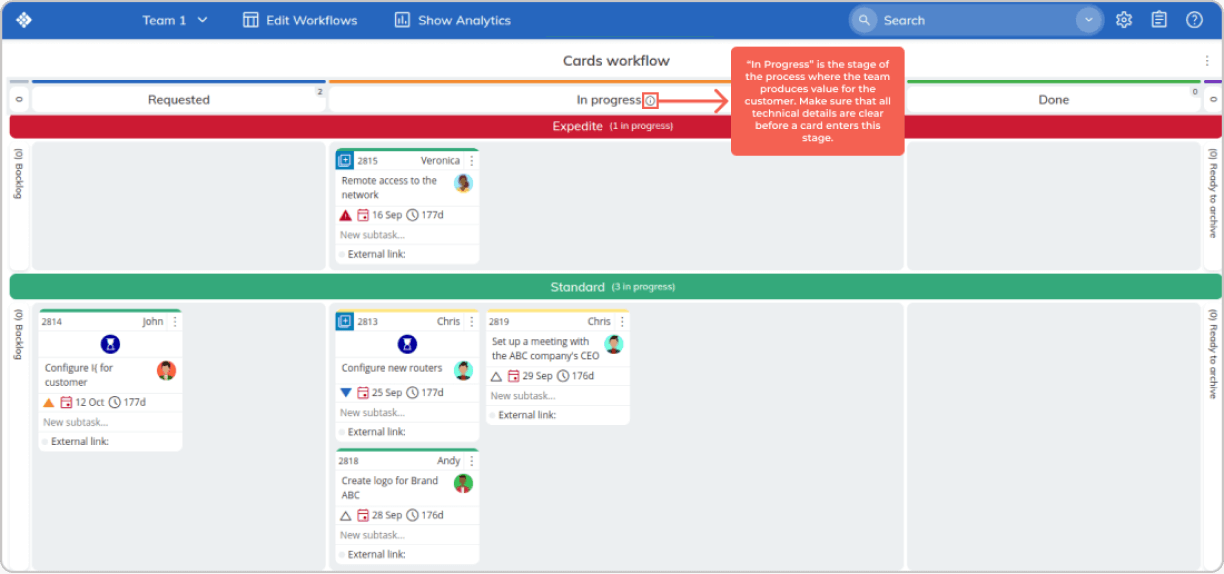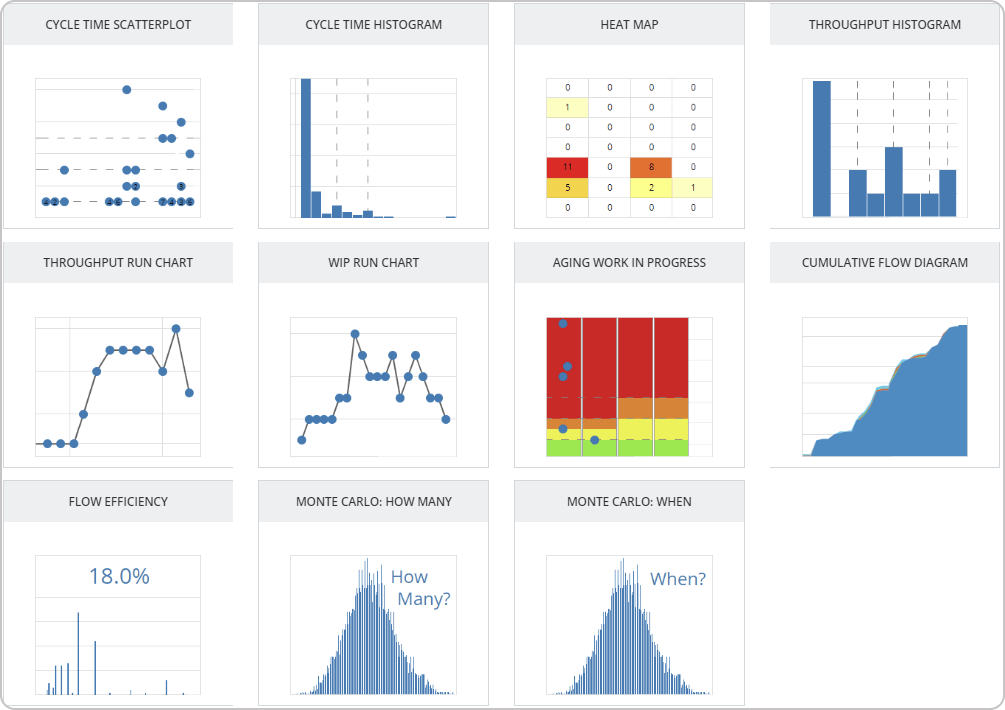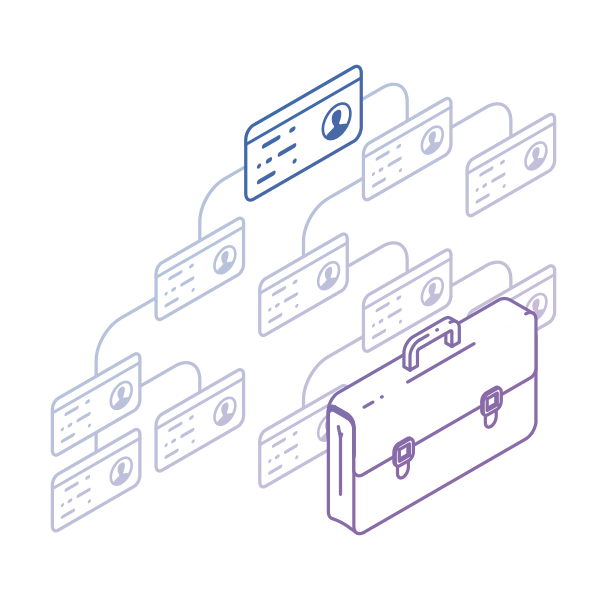In an era where every second counts, businesses must leverage tools that enhance efficiency. Workflows, with their adaptability, automation, and systematic approach, have emerged as a cornerstone for operational excellence.
Stepping into the Basics of Workflows
Understanding the essentials of a workflow helps organizations manage and streamline the processes they undergo to accomplish various activities, from simple tasks to complex projects.
What Is a Workflow?
A workflow is a series of outlined, repeatable and interconnected steps designed to achieve a specific business goal. It represents an end-to-end working process that serves as a blueprint for how work should be executed. A well-defined workflow ensures that nothing important is overlooked and that activities are completed in the most efficient order.
Visualizing workflows allows businesses to create productive and lasting business process management practices. As organizations adopt or improve their workflows, they enhance their ability to maintain control over the moving parts of their projects and ensure they meet their targets with consistency and quality.
Common Workflow Types
Several common workflow types are widely used across various industries to manage processes and tasks efficiently. Let’s have a look at them:
-
Process Workflow: A visual representation of a process outlining a series of repetitive and predictable steps, tasks, or activities. Examples include recruiting new employees, customer onboarding, vacation requests, sales orders, and more.
-
Case-Based Workflow: This type is often used in scenarios where each case or instance may follow a unique path through the workflow, depending on specific characteristics or inputs. Appropriate for processes with a variety of scenarios that require different approaches and do not have a sequential path.
-
Project Workflow: A type of workflow with a well-defined structure but also flexibility to quickly correspond to upcoming requests related to a project. The steps and tasks involved are aligned with a specific project. Project workflows usually outline the steps and serve as a systematic guide to a one-time project.
-
Human-centric Workflow: It prioritizes human involvement in decision-making or task execution. This workflow is primarily suitable for processes that involve complex decision-making, creativity, or tasks that cannot be fully automated.
-
System-Centric Workflow: Within a system-centric workflow, most tasks are automated and demand minimal human intervention. It is primarily applied to repetitive tasks that the system itself can execute.
-
Document Workflow: A workflow built around the creation, review, approval, and storage of documents. It ensures a structured and efficient process for handling documents within an organization. Typical examples include contract approvals, document reviews, and content creation.
Why Implementing Workflows Matters?
Undoubtedly, the most outstanding advantage of workflows is the ability to provide visibility through the entire work process. By visualizing the workflow, teams can easily identify each task's dependencies, required inputs, and the people responsible for each step. This clarity promotes better communication, eliminates unnecessary steps and bottlenecks, ensures strategic alignment, and greatly improves overall efficiency and productivity.
Navigating Obstacles in Workflow Management
While workflows bring structure and efficiency to processes, they also come with a set of challenges. Identifying these challenges is crucial for ensuring smooth operations within an organization. Here are some common challenges associated with managing workflows:
-
Resistance to change: Employees may resist the introduction of new workflows due to a fear of the unknown. Resistance can hinder the successful implementation of workflows, leading to delays and a lack of employee buy-in.
-
Complexity in design: Crafting an effective workflow often requires in-depth knowledge of the process and can be complex to design, especially for cross-functional processes.
-
Missing adequate communication: Poor communication about changes in workflows or process updates can lead to misunderstandings, missed deadlines, and a lack of clarity regarding expectations and responsibilities.
-
Integration/ Technology constraints: Depending on the available technology infrastructure, organizations may face limitations in implementing certain automated workflows or integrating with other software or databases.
-
Security concerns: Workflows involving sensitive data or critical processes may face security concerns, especially if proper measures are not in place to protect information.
Overcoming these challenges requires a comprehensive approach involving clear communication, ongoing training, strategic planning, and a commitment to continuous improvement.
Automated vs. Manual Workflow: What Is the Difference?
The primary difference between automated and manual workflows lies in how tasks and processes are executed within a system or organization. Each category serves distinct needs and brings its own set of benefits.
Manual Workflow
Manual workflows involve human intervention in the execution of tasks. Individuals perform the necessary actions, and the flow of work relies on manual effort and decision-making at each step. The steps are often communicated using documents or verbally.
Manual workflows are highly suitable for more complex tasks that require critical thinking, creativity, or subjective judgment. Furthermore, they offer greater flexibility, allowing individuals to adapt and make decisions based on unique situations. Individuals also have more control over monitoring progress and spotting issues.
Examples of manual workflows include conducting an interview, reviewing documents, and signing papers.
Despite the benefits manual workflows bring to teams, their capabilities are limited when executing tasks in less time, reducing the chances of physical damage or mistakes due to human involvement or bringing transparency across multiple teams. Given technological advancement and the fast-paced business environment, manual workflows are slightly replaced with automated workflow.
Automated Workflow
Automated workflows utilize software systems to carry out tasks with minimal human intervention. By automating repeated tasks, teams reduce the time and effort required for routine tasks to be executed, leading to faster and more consistent results. Workflow automation allows teams to easily minimize errors and scale to facilitate and handle the increasing workload volume.
Workflow management software is commonly used to implement automated workflows. It helps create tasks, generate reports, receive email notifications, synchronize data across the organization, and more.
According to various research, the adoption of workflow automation is on the rise across businesses of all sizes, offering a spectrum of advantages. Going by some statistics, workflow automation will continue to support companies in achieving operational efficiency.
- 91% of businesses using automated workflows gain better visibility into their processes.
- Organizations save up to 77% of their time spent on routine tasks.
- Teams managed to reduce errors by 32%.
- Automated business processes are improved by 60%.
Workflow vs. Other Process Management Tools
In work management, organizations can choose from a wide array of process management tools to help them improve transparency and drive performance excellence.
Let’s go over a few well-known options and see how they differ from workflows.
Workflow vs. Flowchart
A flowchart is a visual representation of a process or workflow. It is a diagram illustrating a step-by-step approach using different shapes and boxes. Each element of the model represents an attribute of the process – resource, comment, decision, and more. Flowcharts are successfully applied in analyzing and resolving issues, proposing solutions, and general work processes.
Workflow vs. Gantt Chart
A Gantt chart is a well-known visual tool used in project management. It provides a timeline view of tasks, their start and end dates, and their dependencies. Each task is shown as a horizontal bar, each bar's length displays the duration of the task. Dependencies between tasks are often represented through linking lines.
A Gantt chart offers a high-level overview of the project schedule. It provides a different level of detail regarding each task's specific steps or decision points. It is particularly useful for tracking progress, managing resources, and communicating the project schedule to stakeholders.
Workflow vs. Checklist
Checklists are simple to-do lists with tasks that need to be completed. Tasks may have no particular order on the list, and it is not necessary to have a significant dependency between each one of the items. The checklist primarily aims to provide a simple way to track tasks. They may be part of a workflow as a tool to keep everything in a single place and not be left out.
6 Essential Steps to Create a Workflow in Practice
Building an effective workflow requires identifying process steps and using software to keep shared information in a single place and track progress in real-time.
Let’s break down the workflow process and examine the specifics of each step.
Step 1. Define the Steps Involved in the Process
Before anything else, it is crucial to understand the process in detail. It will be challenging to create a workflow when there are uncertainties, as this will result in disrupting the process, the need for rework, and generating waste of any kind.
Communicating the specific steps of the process marks the beginning of building the workflow system. Visualizing the end-to-end process and creating value stream maps helps teams and management oversee the flow of work across the organization and how operational efforts are strategically aligned with the business goals.
Using diagrams such as flowcharts helps teams outline the process steps of a specific workflow. Once identified, the process flow can be translated into a digital solution where the actual work is executed. Visualization tools like kanban boards are commonly utilized to display the workflow and gain a better understanding of the overall workload.
Step 2. Design the Workflow
This step is the essence of creating your workflow. It involves displaying every step of your unique process, from the first to the last stage, in a sequential way. Visualizing your entire workflow gives ground for better optimization, improved collaboration and process enhancement.
Establishing an interconnected dependency between teams, workflows, and projects enhances transparency, provides a comprehensive understanding of work across organizational levels, and speeds up project delivery.
In Businessmap, teams can customize their kanban boards in any way possible. Besides the basic functionalities of building a board for a single team, the platform offers the capability of having multiple workflows on one kanban board. This is especially useful for scenarios with different skill sets, types of work, or a portfolio of projects.

Step 3. Set the Workflow in Motion
This is the step where tasks are carried out, and the workflow progresses toward the achievement of its goals. During this stage, teams can coordinate workflow details, such as outlining the tasks, defining roles and responsibilities, and establishing the timeline for completion.
Whether managing projects more traditionally or adopting the Agile way of working, introducing work-in-progress limits will tremendously benefit the performance of the team. Implementing this practice enables teams to minimize multitasking and optimize work capacity. After all, effective workflows prioritize delivering high-value work while protecting the team members from excessive burdens.

To ensure successful project delivery, it is important for everyone to know what is expected to be done at every stage of the workflow. In Businessmap, teams develop workflow explicit policies or a set of rules and procedures to guide them throughout the stages of the work process.

Step 4. Address and Resolve Workflow Roadblocks
During this stage, teams can examine the health of their work and act accordingly. When work is interrupted for any reason, this affects the whole workflow's performance. Regularly review the workflow to identify roadblocks at an early stage and ensure smooth progression.
To cope with this, Businessmap users can easily spot process bottlenecks and address them promptly by dividing their work stages into active and queue stages. This allows them to assess their value-adding vs non-value-adding activities. Additionally, they can indicate and highlight specific issues that block the progress of a work item.
Step 5. Embracing the Power of Workflow Automation
To take a step further toward optimizing your workflows, use workflow automation to save time and deliver faster. This function helps reduce the manual work of creating routine tasks and increase the productivity of the team by dedicating this time to something of higher value. Businessmap supports this functionality by offering a wide variety of "if-this-then-that" policies.
Step 6. Regular Reviews for Workflow Optimizations
Throughout the workflow, monitoring and control mechanisms are in place to track progress, identify issues, and ensure the process is on track. Adjustments may be made as needed to address any deviations from the plan.
Equipped with a powerful module of Workflow Analytics, Businessmap helps teams make informed decisions about their processes based on historical data rather than assumptions. The wide variety of analytics tools allows them to optimize workflow performance for faster service delivery.

Workflow Analytics in Businessmap
Frequently Asked Questions (FAQs)
What are the 3 basic components of workflow?
The three key components within a workflow are input (resources), work and output (result).
Workflows vs Process: What Is the Difference?
While both workflows and processes involve sequences of steps, a workflow is a more granular mapping of roles and tasks that clearly defines who is responsible for what at each stage. In contrast, a process is a higher-level description of tasks necessary to reach an outcome.
What are examples of workflows?
Typical workflow examples include:
- Product assembly
- Processing purchasing order
- Customer onboarding
- Support ticket submission
- Content creation
- Invoicing
What Is a Workflow Diagram?
Workflow diagrams are visual representations that chart the flow of tasks and activities within a process. They help identify bottlenecks, redundancies, and opportunities for optimizing the process flow.
Businessmap is the most flexible software
to align work with company goals












